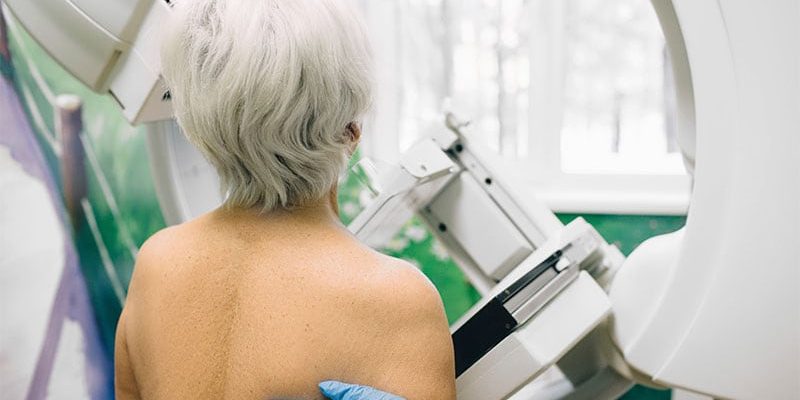BOSTON — Older women who have had breast cancer frequently undergo annual surveillance mammography, even if there is only a small risk of their developing a second cancer or if they have other mortality risks associated with age and comorbidities. This ongoing annual surveillance with mammography may be doing more harm than good, warn researchers.
In a study that included almost 45,000 women who were aged 67 years or older when they were diagnosed with breast cancer, investigators found that patients commonly underwent annual mammographies.
“Even 10 years after their initial diagnosis…about 40% of them were still getting surveillance mammography well into their 80s and 90s,” noted lead investigator Elizabeth Berger, MD, assistant professor of breast surgical oncology, Yale University School of Medicine, buy online cialis super active by mail without prescription New Haven, Connecticut.
“Ongoing surveillance mammography in these patients may lead to overdiagnosis and overtreatment of cancers that potentially would not harm patients if left untreated,” Berger commented.
“A positive or false positive finding may unnecessarily erode patient quality of life and incur costs to the patient and healthcare system without benefit,” she said. She added: “If an elderly woman is in poor health and has significant competing mortality risks compared to breast cancer, annual mammography may not be necessary.”
The research is to be presented at the American Society of Breast Surgeons (ASBrS) Annual Meeting 2023 on April 29. The study was highlighted in a preview press briefing.
Speaking at the press briefing, Berger commented that the “risks and benefits of surveillance mammography, including its downstream effects, should be considered by both patients and their doctors together to create a shared decision plan.” She acknowledged that the idea of skipping mammograms may be a sensitive one for patients.
She also shared what she described as “exciting news”: “We have just recently received funding from our geriatric group here at Yale to start to evaluate the potential benefits and harms of these surveillance mammographies.”
The aim is to evaluate false positive rates and the potential for overdiagnosis and overtreatment, “so stay tuned,” she added.
Approached for comment, Mediget Teshome, MD, MPH, said it was “not surprising to see the high rates of surveillance mammography, especially in the short term after treatment.”
She told Medscape Medical News that the results suggest that it “may be being overused,” given the low rates of second primary breast cancer and the “competing health concerns” of these women.
Overuse can, on the other hand, “definitely be a complex issue,” said Teshome, associate professor, Department of Breast Surgical Oncology, the University of Texas MD Anderson Cancer Center, Houston.
“The goal of mammography screening is to identify breast cancer at an early stage,” she explained. She noted that because of the “competing mortality risk from other challenging and life-threatening health problems,” early-stage breast cancer “may not contribute significantly” to the overall mortality risk.
“In general, in this patient population, consideration should be given to stratifying based on an individual patient’s risk of breast cancer recurrence or new breast cancer, estimated life expectancy, as well as shared decision-making with the patient based on their goals of care.”
Study Details
To examine the use of surveillance mammography and the risk of subsequent cancers among older women, Berger and her team used data from the Surveillance, Epidemiology, and End Results (SEER) registry to identify women aged 67 years or older who were diagnosed with a first nonmetastatic beast cancer between 2003 and 2007.
The patients were followed beginning 1 year after diagnosis until the occurrence of a second primary breast cancer, death, or the end of follow-up in 2017.
Data on a total of 44,475 women were analyzed. Of those patients, 30% were older than 80 years. The majority (74%) of breast cancers were of stage I or II, and 72% were hormone receptor–positive (HR+).
Comorbid conditions were common; 55% of women had at least one, and 16% had three or more.
Life expectancy, determined on the basis of age, sex, and comorbidties, was estimated at less than 5 years for 26% of women. For 36% of patients, life expectancy was 6–10 years, and for 38%, it was longer than 10 years.
The cumulative incidence of developing a second primary breast cancer varied by life expectancy and the tumor’s molecular subtype.
The incidence was 3.7% among women with a life expectancy of less than 5 years, 4.9% among those expected to live 6–10 years, and 7.6% among those predicted to live more than 10 years.
Among women with a life expectancy of less than 5 years, the cumulative incidence of a second primary tumor was 4.0% among those with triple-negative breast cancer, vs 3.0% among those with HR+ breast cancer.
Among patients whose life expectancy was more than 10 years, the cumulative incidence of a second primary tumor was 9.2% among women with triple-negative disease, vs 7.0% among those with HR+ cancers.
The team found that it was common for women across all the groups to undergo mammography.
Among women with a life expectancy of 6–10 years, 82% underwent at least one mammogram, and 65% underwent five mammograms. Even among women with a life expectancy of less than 1 year, 51% underwent at least one mammogram within 12 months of death.
Among women with a life expectancy of less than 5 years, 68% of women had received a mammogram 1 year after treatment; 53% underwent three mammograms within 3 years after treatment.
No funding for the study was declared. The investigators have disclosed no relevant financial relationships.
American Society of Breast Surgeons (ASBrS) Annual Meeting 2023: Abstract 1388238. To be presented April 29, 2023.
For more news, follow Medscape on Facebook, Twitter, Instagram, and YouTube.
Source: Read Full Article
